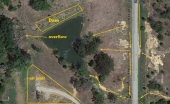




Community Building 2.0: ask me about drL, the rotational-mob-grazing format for human interactions.
 1
1













Community Building 2.0: ask me about drL, the rotational-mob-grazing format for human interactions.









Casie Becker wrote:I've added your post to the fish and aquaponics forums. The limited information I have is for a much warmer climate. I think catfish and blue gill can at least survive your climate, but I doubt tilapia would. As I understand it a colder climate means slower growing fish, for those species that can handle the cold at all.
If I were looking for information on this myself I would spend some time in the both the forums I've added your post to. This thread https://permies.com/t/20136/small-scale-fish-farming-startup#495179 lists several fish that have the potential to live off vegetable scraps.
Community Building 2.0: ask me about drL, the rotational-mob-grazing format for human interactions.
 3
3




Canberra Permaculture - My Blog - Wild Cheesemaking - Aquaponics - Korean Natural Farming









Gurkan Yeniceri wrote:If it is deep enough (e.g. more than a meter) you can have trout.
First establish some vegetation in the pond. This will attract frogs. Food for fish.
Second establish some crustaceans like fresh water shrimps, yabbies' etc. These will be food for fish. You can also try gambusia fish (mosquito larvae eater) or Gammarus pulex which are good food resources for trout.
The other vegetation around the pond will feed on excess nutrients produced by life in the pond.
Get a bottom feeder fish which will churn the bottom, eating the build up debris.
Get another top feeder fish like trout (trout is carnivorous) or tilapia, depending on your climate of course.
Don't over stock the fish and regularly check pH, ammonia, nitrite, nitrate
Once it founds its balance you don't even need to feed the fish anymore. They would be alright.
Community Building 2.0: ask me about drL, the rotational-mob-grazing format for human interactions.




Canberra Permaculture - My Blog - Wild Cheesemaking - Aquaponics - Korean Natural Farming




A human being should be able to change a diaper, plan an invasion, butcher a hog, conn a ship, design a building, write a sonnet, balance accounts, build a wall, set a bone, comfort the dying, take orders, give orders, cooperate, act alone, solve equations, analyze a new problem, pitch manure, program a computer, cook a tasty meal, fight efficiently, die gallantly. Specialization is for insects.
-Robert A. Heinlein




Joshua Myrvaagnes wrote:Thanks, that's a great answer!
I guess I also want to plant a mulberry tree over my pond-chickens and have them eat that. Year-round.
(Magic always comes with a price, dearie!)
The other advantage of feeding the fish is that's a way of catching them, vs. having to go fishing. In Geoff's video he has a feeding-plus-aearation pool at the side and a sliding door that traps them in there. Sneaky but convenient.
S. Bengi knows his stuff! Thanks, S.!

|
I see you eyeballing the tiny ad's pie
The new permaculture playing cards kickstarter is now live!
https://www.kickstarter.com/projects/paulwheaton/garden-cards
|




